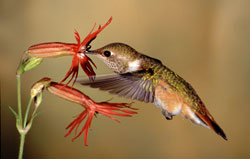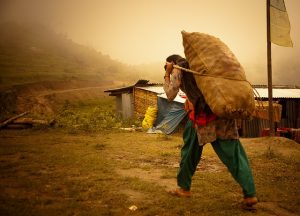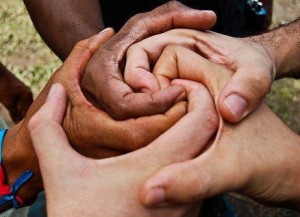 The Yogabliss, Two Rivers/RiverTree Yoga on-line Moving into Meditation classes met this morning. Today we dedicated our hearts and minds to compassion. We explored ways to cultivate it within ourselves so that we are prepared to offer it to others. The practice goes deep – touching our fear and vulnerability and our caring and courage.
The Yogabliss, Two Rivers/RiverTree Yoga on-line Moving into Meditation classes met this morning. Today we dedicated our hearts and minds to compassion. We explored ways to cultivate it within ourselves so that we are prepared to offer it to others. The practice goes deep – touching our fear and vulnerability and our caring and courage.
We drew inspiration from the poet Naomi Shihab Nye’s Kindness and Mary Oliver’s To Begin With: The Sweetgrass. They paint pictures in words that land in our heart, flesh and bones. They move us beyond the edges of our skin into the “gravity of kindness” and to “becom[ing] a child of the clouds.”
Our guided meditation was inspired by meditation teacher and writer, Oren Jay Sofer. He offers many ways to contemplate and cultivate compassion. His teaching outlines the dimensions of compassion to include equanimity and wisdom. He offers ways of “resourcing ourselves” so that we can bring caring action to others without becoming overwhelmed.
Teacher and writer Parker Palmer’s short essay, We Deserve the Compassion We Give, reminds us of the “inner mending” we all need to do in order to be there for others.
Relaxed Reflection
 Welcome. Here in the Northwest, old friends are pushing up from Earth and opening their faces to the sun . . . dandelions . . . wood violets, trillium, skunk cabbage and bleeding hearts. Coltsfoot, Oregon grape, salal and salmonberries . . . There is a beautiful tenderness in the way they offer themselves up to life – seeding and sustaining – nourishing bees and butterflies, ants and hummingbirds. We, too, have a kind of nectar that we offer the world when our hearts are open. Compassion.
Welcome. Here in the Northwest, old friends are pushing up from Earth and opening their faces to the sun . . . dandelions . . . wood violets, trillium, skunk cabbage and bleeding hearts. Coltsfoot, Oregon grape, salal and salmonberries . . . There is a beautiful tenderness in the way they offer themselves up to life – seeding and sustaining – nourishing bees and butterflies, ants and hummingbirds. We, too, have a kind of nectar that we offer the world when our hearts are open. Compassion.
Like turning toward the sun – we feel the warmth of caring. Compassion flowers when we turn toward suffering.
Today, there are so many instances of suffering that call for our attention: the violent tragedies in Georgia and Colorado, the silent threat of illness and loss, the loneliness of isolation and the anxiety of uncertainty. Our hearts are full. Our minds are full.
In her poem, Kindness, Naomi Shihab Nye, writes:
Before you know what kindness really is
you must lose things,
feel the future dissolve in a moment
like salt in a weakened broth.
What you held in your hand,
what you counted and carefully saved,
all this must go so you know
how desolate the landscape can be
between the regions of kindness.
 How you ride and ride
How you ride and ride
thinking the bus will never stop,
the passengers eating maize and chicken
will stare out the window forever.
Before you learn the tender gravity of kindness,
you must travel where the Indian in a white poncho
lies dead by the side of the road.
You must see how this could be you,
how he too was someone
who journeyed through the night with plans
and the simple breath that kept him alive.
Before you know kindness as the deepest thing inside,
you must know sorrow as the other deepest thing.
You must wake up with sorrow.
You must speak to it till your voice
catches the thread of all sorrows
and you see the size of the cloth.
Then it is only kindness that makes sense anymore,
only kindness that ties your shoes
and sends you out into the day to mail letters and purchase bread,
only kindness that raises its head
from the crowd of the world to say
It is I you have been looking for,
and then goes with you everywhere
like a shadow or a friend.
Haven’t we lost the things we love? This year, haven’t we witnessed so many who have lost their breath? This is why we practice. We practice for the day when we face suffering. We practice until we are held in the tender gravity of kindness.
 Coming back to earth now . . . Settling down in the tender gravity of kindness . . . Letting yourself be nourished by the breath . . . supported by Earth . . . gifts so freely given . . . Letting yourself be . . . giving yourself the simplest kindness . . . As you become aware of any tension in your body, your heart, your mind . . . can you offer yourself some gentleness? Like a caring friend just being there . . . This is compassion . . . We begin just by being there – turning towards pain or suffering or challenge with the possibility of helping. Perhaps being with the question: ‘What is needed now?’ How does our heart move in response to difficulty? How do we relate to difficulties in a relaxed and loving way?
Coming back to earth now . . . Settling down in the tender gravity of kindness . . . Letting yourself be nourished by the breath . . . supported by Earth . . . gifts so freely given . . . Letting yourself be . . . giving yourself the simplest kindness . . . As you become aware of any tension in your body, your heart, your mind . . . can you offer yourself some gentleness? Like a caring friend just being there . . . This is compassion . . . We begin just by being there – turning towards pain or suffering or challenge with the possibility of helping. Perhaps being with the question: ‘What is needed now?’ How does our heart move in response to difficulty? How do we relate to difficulties in a relaxed and loving way?
Oren Jay Sofer believes that:
. . . all responses are natural. . . . We’re doing the best we can with the resources we have. [In practice] we are developing a richer array of resources inside so we don’t need to move into overwhelm, resentment, bitterness or numbness. . . . We recognize these strategies come at a cost: greater suffering. The more we avoid pain in our lives the narrower our lives get. We can learn to respond more effectively.
In his course, Holistic Spirituality, he explores the different dimensions of compassion and how we bring it to life. He says:
 . . . to feel compassion we need to open our awareness and our heart to the truth of what either we, our loved ones, our community and beyond are experiencing . . . We have to notice it. And then in response the heart starts to feel. . . . Compassion has to be balanced with equanimity. Equanimity is the wisdom of perspective. It recognizes that things in the world follow their own course and we all have to choose how we respond . . . Equanimity understands that there is only so much we can do and there is so much we can do.
. . . to feel compassion we need to open our awareness and our heart to the truth of what either we, our loved ones, our community and beyond are experiencing . . . We have to notice it. And then in response the heart starts to feel. . . . Compassion has to be balanced with equanimity. Equanimity is the wisdom of perspective. It recognizes that things in the world follow their own course and we all have to choose how we respond . . . Equanimity understands that there is only so much we can do and there is so much we can do.
Our first response is often our caring presence. It may be as simple and profound as listening to silence together while allowing a heavy heart to reveal itself slowly like the opening of a flower. It may be saying ‘yes’ with enthusiasm and ‘no’ with love. We may be seeking wisdom together.
Author and teacher, Parker Palmer writes that We Deserve the Compassion We Give. He reminds us that:
 None of us can “mend” another person’s life, no matter how much the other may need it, no matter how much we may want to do it.
None of us can “mend” another person’s life, no matter how much the other may need it, no matter how much we may want to do it.
Mending is inner work that everyone must do for him or herself. . . .
What we can do is walk alongside the people we care about, offering simple companionship and compassion. And if we want to do that, we must save the only life we can save, our own.
Only when I’m in possession of my own heart can I be present for another in a healing, encouraging, empowering way. . . .
Today, we walk alongside each other in companionship and compassion. In practice we go about our inner mending. We are willing to be with our own broken heartedness – to listen for what healing is called for. Our kindness goes with us everywhere like a shadow or a friend. From Mary Oliver’s poem, To Begin With: The Sweetgrass:
…eventually tides will be the only calendar you believe in…
And someone’s face, whom you love, will be as a star
Both intimate and ultimate,
And you will be heart-shaken and respectful.
And you will hear the air itself, like a beloved, whisper
Oh let me, for a while longer, enter the two
Beautiful bodies of your lungs…
 Look, and look again.
Look, and look again.
This world is not just a little thrill for your eyes.
It’s more than bones.
It’s more than the delicate wrist with its personal pulse.
It’s more than the beating of a single heart.
It’s praising.
It’s giving until the giving feels like receiving.
You have a life- just imagine that!
You have this day, and maybe another, and maybe
Still another…
And I have become the child of the clouds, and of hope.
I have become the friend of the enemy, whoever that is.
I have become older and, cherishing what I have learned,
I have become younger.
And what do I risk to tell you this, which is all I know?
Love yourself. Then forget it. Then, love the world.
